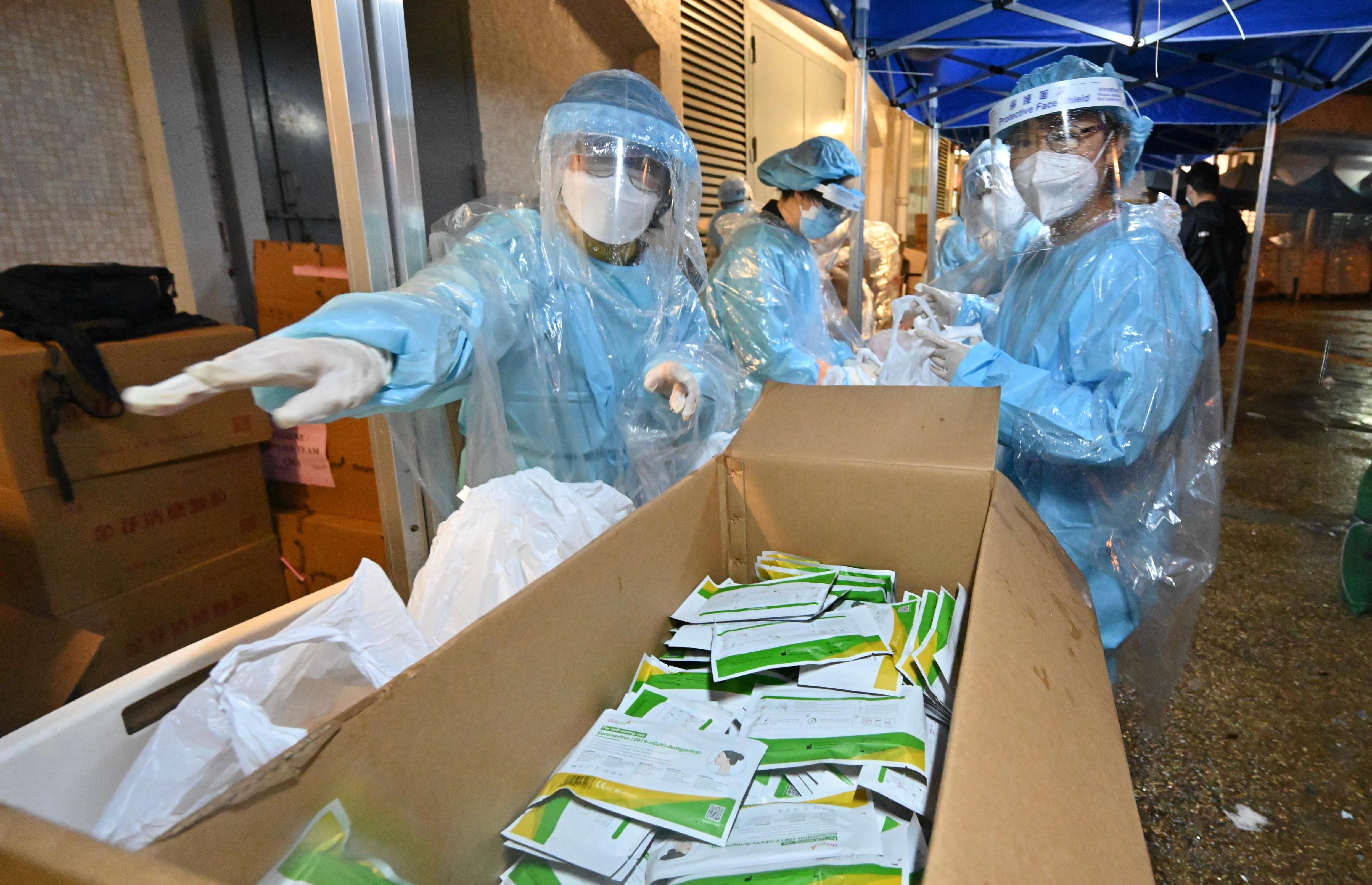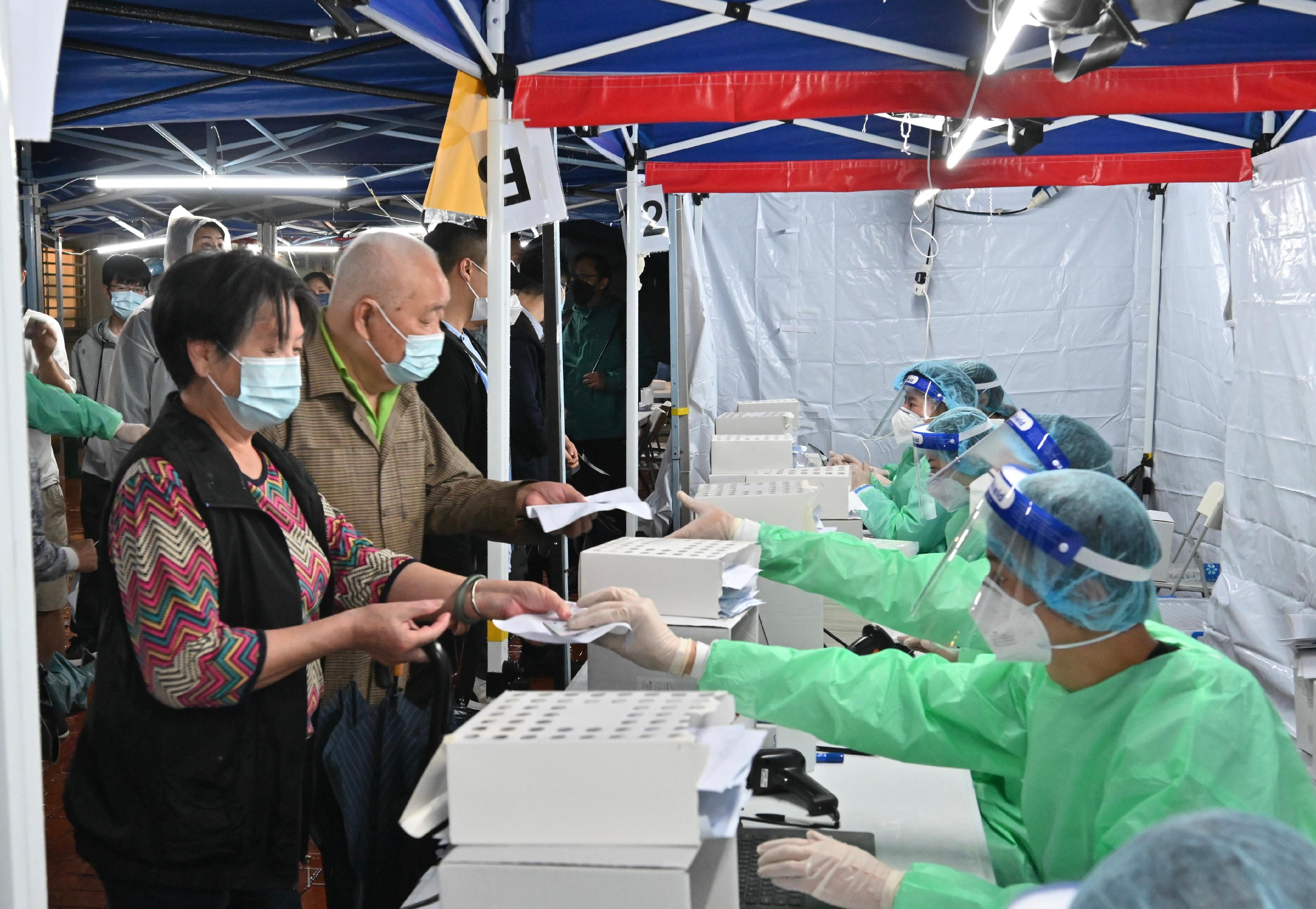LWB goes to front line to fight epidemic (with photos/video)
The Labour and Welfare Bureau (LWB) today (March 24) completed the "restriction-testing declaration" (RTD) operation in the specified "restricted area" in Wong Tai Sin. As part of the Government's anti-epidemic team, the LWB not only assumes the responsibility of caring for the elderly, supporting the disadvantaged and protecting the labour force during the epidemic together with its departments, but also goes to the front line to fight the epidemic by deploying extensive manpower in executing RTD operations.
The Permanent Secretary for Labour and Welfare, Ms Alice Lau, participated in the LWB's RTD operations in Chai Wan earlier and Wong Tai Sin last night (March 23). Apart from taking a closer look at residents' specimen collection procedures in batches and colleagues' on-site data compilation, she also joined colleagues in delivering food packs, rapid test kits and anti-epidemic proprietary Chinese medicines donated by the Central People's Government to residents subject to compulsory testing.
"Our colleagues have to race against time in planning and executing RTDs in every operation as well as team up with testing contractors for overnight work so that it can be completed as early as possible, thus minimising the impact on residents. We are grateful for their professionalism and pursuit of excellence despite the heavy rain yesterday. We also thank residents for their understanding and co-operation during the operations so they could be completed quickly and smoothly," Ms Lau said.
Including the operation which concluded this afternoon, the RTD team comprising the LWB, the Social Welfare Department, the Labour Department, the Working Family Allowance Office and the Office of the Continuing Education Fund has mounted seven RTD operations in various districts in the last fortnight. Depending on the number of persons subject to compulsory testing, about 160 to 200 officers from different grades and ranks worked together in each operation, with a view to pinning down infections in the community for follow-up to achieve the objective of reducing infections.



